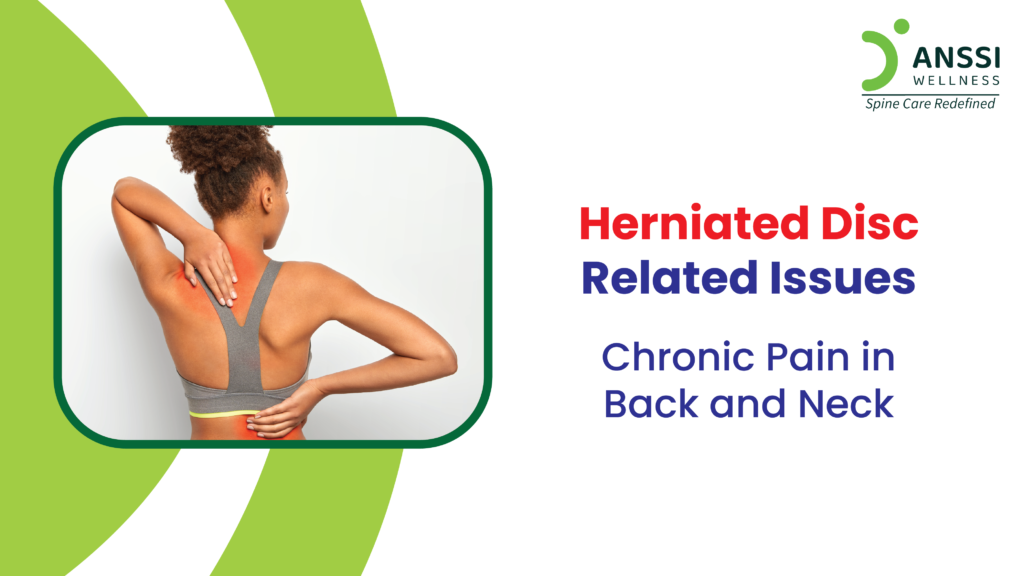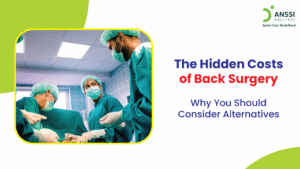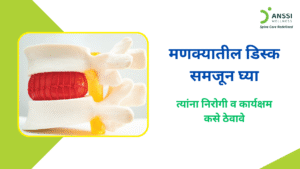Millions of individuals worldwide suffer from a herniated disc, a common spinal ailment. It occurs when a spinal disc, the cushion between vertebrae, bulges or ruptures, putting pressure on nearby nerves. This can lead to chronic pain, stiffness, and reduced mobility, primarily in the lower back and neck.
Ignoring the symptoms of a herniated disc can result in severe complications, making daily activities difficult. Early diagnosis and appropriate treatment are crucial in managing pain and preventing further damage.
Fortunately, several treatment options, including non-surgical spinal decompression, can provide long-term relief without the need for surgery.
What is a Herniated Disc?
A herniated disc, also known as a slipped or ruptured disc, occurs when the soft inner gel-like material of a spinal disc pushes out through a tear in the outer layer. This can irritate nearby nerves, leading to pain, numbness, and weakness in the affected area.
Common Causes of a Herniated Disc:
- Ageing: Over time, spinal discs lose water content, making them less flexible and more prone to damage.
- Poor Posture: Slouching, prolonged sitting, and improper lifting techniques put excessive strain on the spine.
- Heavy Lifting: Lifting objects incorrectly, especially with a twisting motion, increases the risk of disc herniation.
- Injuries: Sudden trauma, such as falls or accidents, can cause a disc to rupture.
- Obesity: Excess weight adds pressure to the spine, accelerating disc degeneration.
Disorders Caused by a Herniated Disc
A herniated disc can lead to various spinal disorders, depending on its location in the spine.
Back Issues (Thoracic/Lumbar Herniated Disc)
- Sciatica: A common condition where the herniated disc presses on the sciatic nerve, causing sharp pain, numbness, or tingling that radiates down the leg.
- Chronic Back Pain: Persistent discomfort that worsens with movement, bending, or prolonged sitting.
- Leg Weakness or Numbness: Compression of nerves in the lower spine can cause weakness, tingling, or loss of sensation in the legs and feet.
The lower back (lumbar spine) is more prone to herniated discs because it bears most of the body’s weight and absorbs daily stress. Frequent bending, lifting, and poor posture add pressure on lumbar discs. In contrast, the upper back (thoracic spine) is more stable and less mobile, reducing herniation risk.
Neck Issues (Cervical Herniated Disc)
- Cervical Radiculopathy: A pinched nerve in the neck that leads to pain, numbness, and weakness in the shoulders, arms, or hands.
- Neck Stiffness and Pain: A herniated disc in the cervical spine can cause difficulty in neck movement, leading to stiffness and soreness.
- Headaches and Dizziness: In some cases, cervical disc issues may contribute to tension headaches and dizziness.
Treatment Options for a Herniated Disc
The good news is that many herniated disc cases can be managed without surgery. Several non-invasive treatment options help alleviate pain, restore mobility, and improve quality of life.
1. Medications for Pain Relief
- Pain Relievers: Over-the-counter medications like ibuprofen and acetaminophen help reduce inflammation and discomfort.
- Muscle Relaxants: Prescribed to relieve muscle spasms associated with a herniated disc.
- Corticosteroid Injections: In severe cases, steroid injections may be recommended to reduce inflammation and pain.
2. Physical Therapy and Lifestyle Modifications
- Stretching and Strengthening Exercises: Specific exercises improve spinal flexibility and strengthen muscles supporting the spine.
- Postural Corrections: Adapting to proper sitting, standing, and lifting practices reduces strain on the spine.
- Heat and Cold Therapy: Alternating between hot and cold packs helps relieve pain and reduce inflammation.
3. Non-Surgical Spinal Decompression Treatment
One of the most effective non-surgical solutions for herniated discs is non-surgical spinal decompression treatment. This cutting-edge procedure creates negative pressure inside the discs by gently stretching the spine.
Benefits of Non-Surgical Spinal Decompression Treatment
- Reduces Pressure on the Nerves: Helps retract the herniated disc material, relieving nerve compression.
- Enhances Nutrient Flow: Promotes healing by increasing the flow of oxygen and nutrient-rich fluid to the affected discs.
- Drug-Free and Non-Invasive: No medications, injections, or surgeries are involved, making it a safe and effective option.
Spinal decompression has helped many individuals regain mobility and live pain-free lives without the risks of surgery.
About ANSSI:
ANSSI Wellness focuses on improving the quality of life for patients suffering from spinal issues, aiming to provide relief where other conventional treatments have failed. Through advanced non-surgical spinal decompression treatment, ANSSI is committed to helping patients avoid surgery and recover in a safe, effective, and compassionate environment.
Connect with ANSSI Wellness on LinkedIn, Instagram, and Facebook for expert guidance.



